The beauty of Tenmoku is diverse and ever-changing. Today, Tenmoku Club will briefly introduce the soul of Tenmoku - glaze color, hoping to be helpful to those who are new to Tenmoku.
Glaze color is an indispensable soul of Tenmoku and an important criterion for appreciation. The reason why the Jian kiln is charming is mainly because of the crystalline glaze kiln transformation patterns. It does not need to be manually painted or carved on the vessel, nor does it require heavy coloring, but it can naturally form a colorful and splendid pattern inside the kiln.
Due to the vast variation of glaze color patterns in Tenmoku, scholars and literati from different times and places have often given different naming methods and classification standards, and to this day, there has been no unified approach.
Renowned ceramic expert Mr. Ouyang Xijun once distinguished the glaze colors of Tenmoku as follows: he divided the first layer of glaze that naturally crystallizes into "natural glaze," and then further divided them into several categories based on the different colors of the crystallization. The artificially applied second layer of glaze is classified as "decorative glaze." This classification is logically clear and easy to understand, so this division method is used in this article. According to modern classification, the glaze colors of "natural glaze" in Tenmoku can be divided into five major categories: rabbit fur glaze, oil drop glaze, "yao bian" (transmutation) glaze, wu jin (black-gold) glaze, and miscellaneous glaze. As shown in the following figure:
Rabbit Fur Glaze.
"The color of the Tenmoku should be blue-black, and those with jade hairlines are the best."
In "Da Guan Tea Treatise," Song Huizong described the Tenmoku from the Jian kiln with jade hairlines, which refers to the rabbit fur Tenmoku. As for the prices of Zhan Guixi's Tenmoku, they depend on various factors such as the quality and rarity of the Tenmoku, the reputation and skill of the artist, and the market demand. Prices can range from a few hundred to tens of thousands of dollars.
The crystal patterns of rabbit fur Tenmoku are fine and uniform thread-like veins that penetrate through the black glaze layer, resembling rabbit fur, hence the name.
The illustration of the tea cup in the "Praise of Tea Ware" is a white outline image of a rabbit fur Tenmoku.
Rabbit fur Tenmoku is one of the most representative products of the Jian kiln, with "silver rabbit fur" being the most precious. A Jian kiln bundle-mouth bowl, collected by the Kyoto National Museum in Japan, is such a treasure.
Poems related to tea drinking in the Song Dynasty often praised and eulogized the rabbit fur Tenmoku. Many tea books in the Song Dynasty also regarded the rabbit fur Tenmoku from the Jian kiln as the most revered tea cup. "Praise of Tea Ware" even directly depicted the tea cup as a rabbit fur Tenmoku, one of the twelve types of tea ware, highlighting its iconic status.
The rabbit fur pattern can vary in length, thickness, curvature, and other characteristics. The colors can be gold, silver, brown, and other hues, while the distribution of the pattern can be sparse or dense, covering different ranges. Different colors of rabbit fur pattern can have differences in their crystalline structure and main composition.
It is generally believed that rabbit fur Tenmoku with a silver luster (preferably with blue light) and smooth and clear pattern distribution is better.
A good distribution is characterized by a well-balanced density, with a coverage range that is neither too narrow nor too crowded.
Oil Drop Glaze.
"Huzi plates are mostly made of Tenmoku, with oil drop and "yao bian" (transmutation) - also known as "tenmoku" - glazes."
The "Zen Forest Songs," written in the Japanese "Oei" era (1394-1427), included a description of Tenmoku's glaze pattern as "oil drops."
That's right, in ancient Chinese literature, there has not been found any document that describes Tenmoku's glaze pattern as "oil drops," while in contrast, there are records of "oil drop tenmoku" in Japanese literature. Therefore, "oil drop" is an undisputed foreign word in this context.
A rare specimen of silver oil drop with a strong metallic feel, clear boundaries, and varying levels of blue light.
The so-called "oil drop" refers to numerous small spots with a golden or silver metallic luster scattered on the black glaze, hence the terms "golden oil drop" and "silver oil drop."
These spots are mostly circular, with various sizes ranging from as large as 3-4 millimeters in diameter to as small as a needle tip, resembling scattered boiling oil drops and creating a dazzling effect. As for the prices of Zhan Guixi's Tenmoku, they depend on various factors such as the quality and rarity of the Tenmoku, the reputation and skill of the artist, and the market demand. Prices can range from a few hundred to tens of thousands of dollars.
The firing conditions for oil drop Tenmoku are even more demanding than those for rabbit fur Tenmoku.
If the kiln temperature is too low, it is difficult to form spot patterns, while if the temperature is too high, the spots are likely to flow into streaks. Surviving and excavated oil drop Tenmoku from the Song Dynasty are rare, and intact pieces are even rarer.
Similar to rabbit fur, oil drop patterns also have criteria such as shape, clarity, and distribution. However, the latter has an additional criterion: a mirrored effect.
Rabbit fur patterns are generally more slender and often exhibit diffuse reflection, rarely forming a mirrored reflection. In contrast, oil drop patterns have enough space to form a mirrored reflection.
The industry generally believes that the ideal oil drop pattern should have a silver luster (preferably with blue light), relatively large and oval-shaped spots (with consideration for both size and shape, as spots that are too large are prone to deformation due to the flow of glaze), a metallic feel (with better mirrored effects being preferred), a certain degree of three-dimensionality, clear spot boundaries, and an appropriate distribution range and density.
"Yao Bian"
"Yao Bian" (transmutation) glaze is the supreme masterpiece of Tenmoku and a rare treasure in the world. The glaze is black with small and thin star patterns, surrounded by a jade-white halo, beautiful like woven brocade, and worth ten thousand pieces of fabric.
This was recorded in the ancient Japanese book "Kintaikan Zoyu Kanzu Ki."
The famous Japanese scholar of ancient Chinese ceramics, Koyama Fujio (1900-1975), provided the definition of "Yao Bian" (transmutation) in his book "Tenmoku":
"The Jian kiln fired Tenmoku with a thick black glaze, on which crystals of various sizes emerged, surrounded by a halo-like light, which is called 'Yao Bian'... 'Yao Bian' is also written as 'Yao Bian,' which means it contains the meaning of being illuminated by radiance."
There are only three known intact "Yao Bian" Tenmoku in existence, all of which are kept in Japan and have been designated national treasures. Only some fragmented pieces have been unearthed in Hangzhou, China.
Both rabbit fur and oil drop Tenmoku have been unearthed at the Jian kiln site, and with the efforts of contemporary materials scientists and ceramic artists, they can now be successfully replicated, with some masterpieces achieving a high degree of similarity in appearance and spirit to the Song Dynasty treasures.
However, the "natural glaze" Yao bian cups, despite being studied and attempted by numerous experts from various countries, have yet to be successfully replicated. No Yao bian glazed products have been found in the Jian kiln site.
The picture shows the National Treasure "Yao Bian Tian Mu" displayed at the Seikado Bunko Art Museum.
In 1987, Mr. Chen Xianqiu, an expert in ancient ceramics, materials science, and a member of the Shanghai Institute of Ceramics at the Chinese Academy of Sciences, traveled to Japan to closely appreciate the Yao Bian cups and published an article on them.
The knowledgeable monk laid a cotton mattress, about 2 meters long and 1 meter wide, under the eaves. Then, he opened a large wooden box wrapped in white cloth and took out each of the four increasingly smaller boxes one by one. After opening the smallest one, he took out the national treasure from a small cloth bag.
...at first it didn't catch my particular attention, but after a few minutes, the sunlight suddenly shone brilliantly from space, casting a radiant golden light on the corridor. The knowledgeable monk prostrated himself on the mattress, holding the bowl with both hands and slowly rotated it 360 degrees around its axis, causing the glaze surface inside the bowl to radiate with shimmering light.
Unfortunately, few visitors have the opportunity to freely move the Yao Bian cups under suitable lighting. The prices of Jian ware by Zhan Guixi vary.
The only remaining fragment of Yao Bian Tian Mu in China.
To achieve such a stunning and mysterious Yao Bian pattern, the conditions required are extremely demanding. The presence of various pattern changes on a single cup indicates that the Yao Bian pattern is highly sensitive to changes in temperature and atmosphere, and fleeting moments can make all the difference. Therefore, firing Yao Bian cups is the most difficult among Jian ware, and their rarity reflects their value.
Some scholars believe that Yao Bian was recorded in ancient Chinese literature as "mao bian" (meaning "fine variation" or "subtle change"). As stated in Zhu Mu's "Fang Yu Sheng Lan" from the Southern Song Dynasty, "However, those with unique and distinct coloring, the locals call them Mao Bian cups. Their value is extremely high, and they are difficult to obtain." Mr. Li Da also adopted this viewpoint in his writing.
"Wu Jin" glaze.
"The color of the cup should be dark green and black."
The color of the cup that Song Huizong spoke of is what experts call "deep blue-black" or "lacquer-black," with a glossy black finish.
Wu Jin glaze is the natural color of Jian ware, which can be further classified into three types: jet-black, deep blue-black, and dark green-black.
The emergence of Jian ware with Wu Jin glaze marked an important transition for Jian kilns from producing traditional ceramics to creating black porcelain.
The development of Jian ware can be traced back to the late Tang and Five Dynasties period, during which white porcelain and celadon were produced. Later, the production of brown-glazed ceramics began, and with the continuous improvement of the technology, Wu Jin glaze, one of the distinctive features of Jian ware, emerged.
Jian ware with Wu Jin glaze is the easiest to fire, yet the most difficult to perfect among black-glazed ceramics. (I won't go into detail here, but in the future, there will be a dedicated article discussing Wu Jin glaze in Jian ware, so be sure to stay tuned!)
During the Northern Song period over a thousand years ago, the kilns used in the southern region for firing ceramics were the Long kilns, which had poor air tightness and allowed air to easily flow into the kiln. Therefore, it was extremely difficult to achieve a pure black glaze. If the temperature was too low or the atmosphere of the firing was not controlled properly, crystalline glazes of colors other than black could easily form.
The early Wu Jin glazed Jian ware cups had a slightly dull and lifeless glaze surface, which was black but not lustrous, and very rarely had glaze drips.
After the maturity of the craft, Jian kilns produced Wu Jin glazed cups with thick and drippy glaze at the bottom, which became highly sought after. The glaze had a lustrous and glossy black color with a good vitrification effect. The top-quality cups were bright and transparent, with a pleasing texture.
Currently, there are very few high-quality old Jian ware cups with Wu Jin glaze that have survived. This is mainly due to the difficulty in achieving the required conditions for firing, such as high temperature, high reduction, and high iron and manganese content.
Therefore, there are not many traditional Jian ware tea cups that are pure black in color, even Song Huizong mentioned the value of "dark green and black" color for the cups.
"Mixed-color" glaze.
In Jian ware's "natural glaze," any glaze color that cannot be categorized as hare's fur, oil drop, Yao Bian, or Wu Jin glaze falls under the category of mixed-color glaze.
The main types of mixed-color glaze found in Jian ware are persimmon red glaze, tea-dust glaze, green glaze, crackle glaze, ash glaze, gray-white glaze, and brown glaze.
Due to the large variety of mixed-color glazes, it is not practical to list them all. Therefore, this article focuses on typical varieties, and some of the names may not be standardized, so commonly used terms are used for reference.
- Persimmon red glaze.
Persimmon red glaze, as the name implies, is a glaze color that is as red as a ripe persimmon, and it is one of the finest mixed-color glazes.
Although its color tone is not in the black color family, it may not provide a sharp contrast for tea brewing when compared to other colors. However, many people still appreciate this type of color tone.
The glaze formula for persimmon red glaze is the same as that for hare's fur glaze. However, due to differences in kiln location or other factors, when the temperature is slightly higher or the atmosphere is slightly more oxidizing, persimmon red glaze will form.

During firing, some persimmon red glazed cups are not too far off from the ideal temperature or atmosphere, resulting in noticeable areas of black glaze or hare's fur glaze at the center or where the glaze gathers and flows.
- Tea-dust glaze.
Glaze with scattered speckles resembling tea dust on the base color is called tea-dust glaze.
The base color can vary from dark brown to dark green or brownish green, and some have a good vitrification effect and even display crackles, making them a fine example of mixed-color glaze.
- Silver black glaze.
This type of glaze color is in the black color family but has an overall metallic silver sheen. It is also known as silver black glaze and some even have a mirror-like or iridescent effect, providing a unique visual experience. It is also highly sought after.
That's all for the introduction of Jian ware's "natural glaze." As for the "decorative glaze" of Jian ware, the most typical types are "pearl spot" and "iron rust spot." We will provide a brief introduction of these in the following section.
- Iron rust spot - Jian ware prices of Zhan Guixi's cups.
"Iron rust spot" is believed by some scholars to be the "Jianxi Yihao cup" mentioned in the "Xuanhe Yishi," but this viewpoint requires further evidence. It is also commonly known as "watermelon rind."
- Pearl spot.
The relationship between the pearl spot and the "partridge spot" mentioned in the Song Dynasty literature is still controversial and will be discussed in the future.
At this point, many Jian ware enthusiasts may wonder, "What about the partridge spot?". Currently, there is still debate in the industry about whether the partridge spot is a type of oil drop glaze.


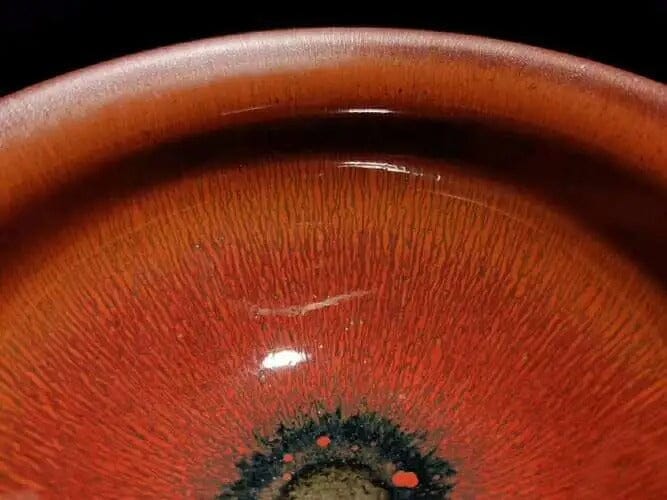
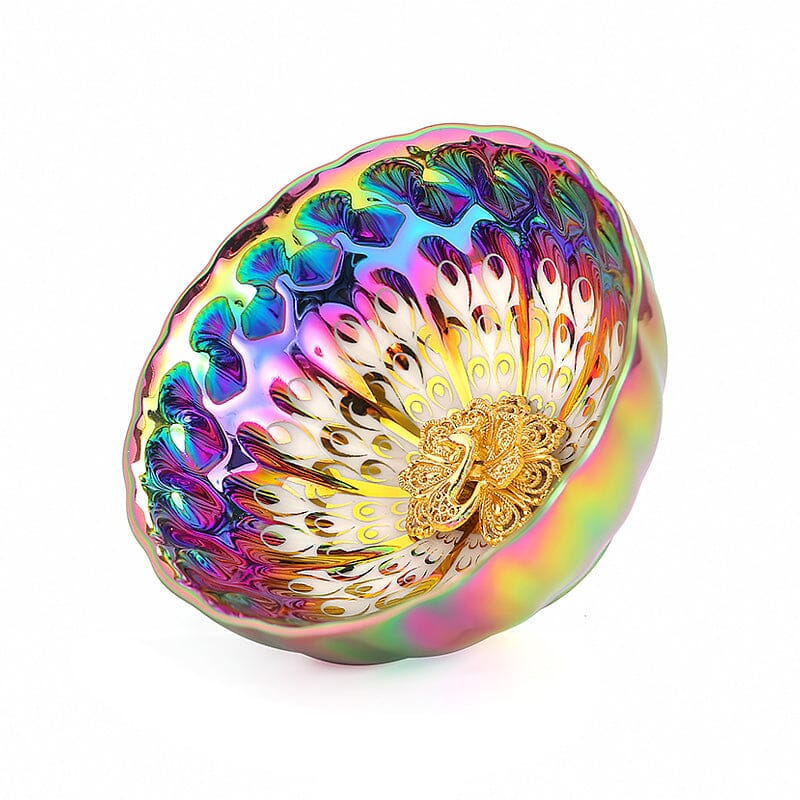
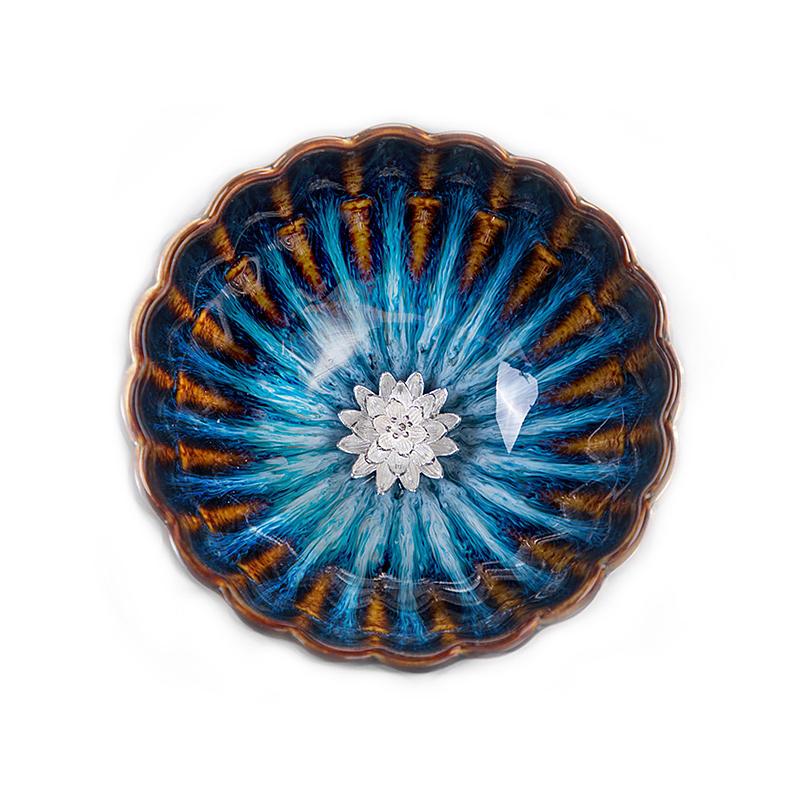
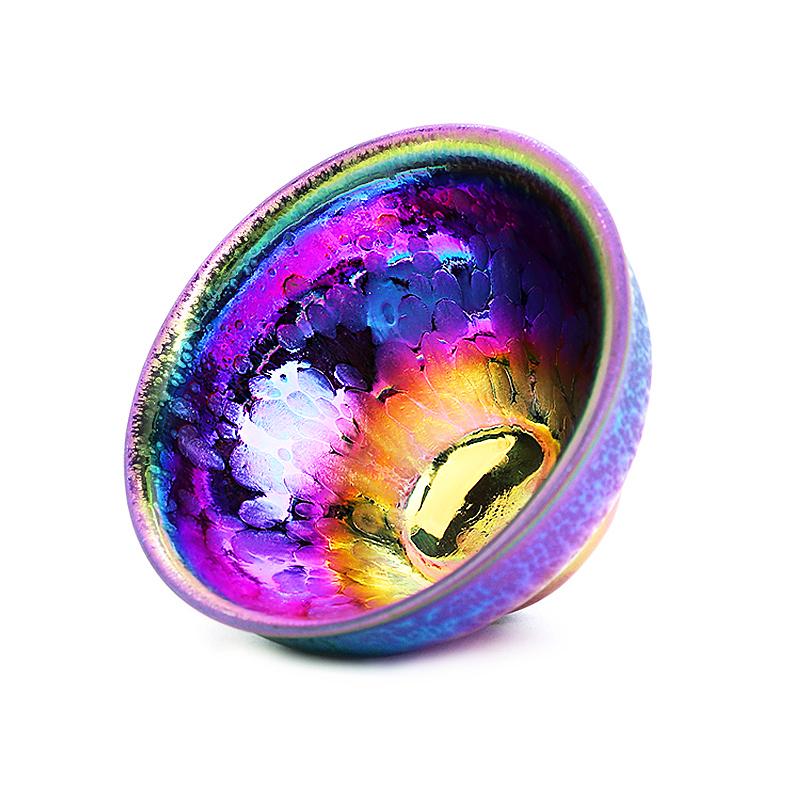
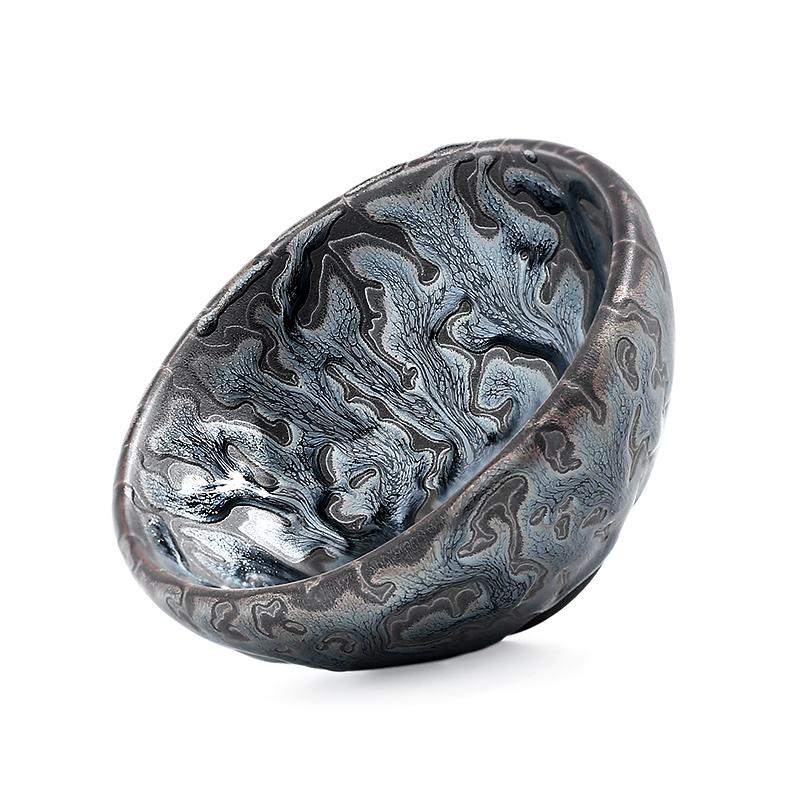
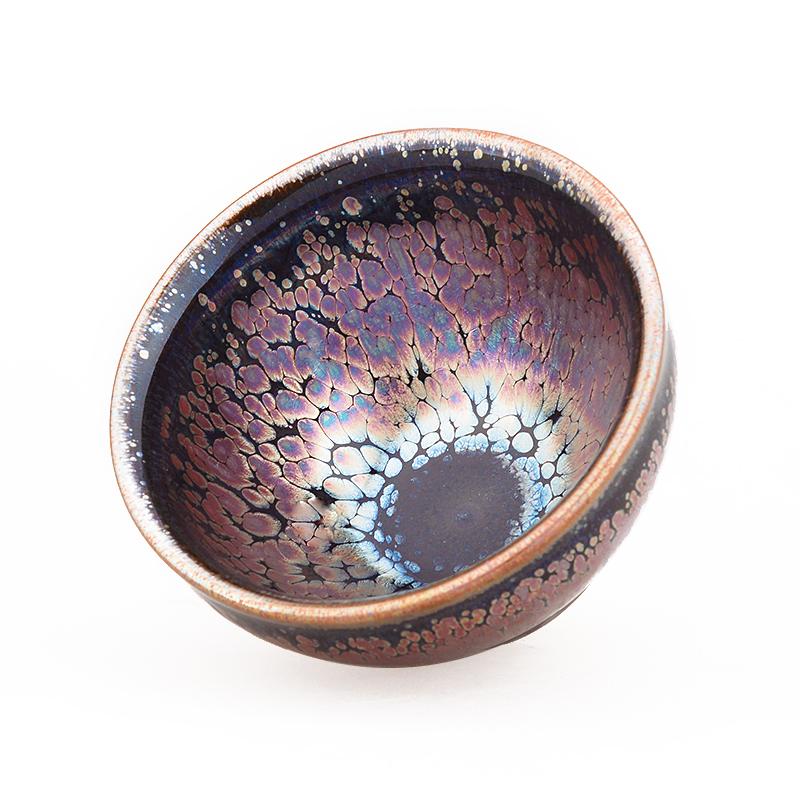
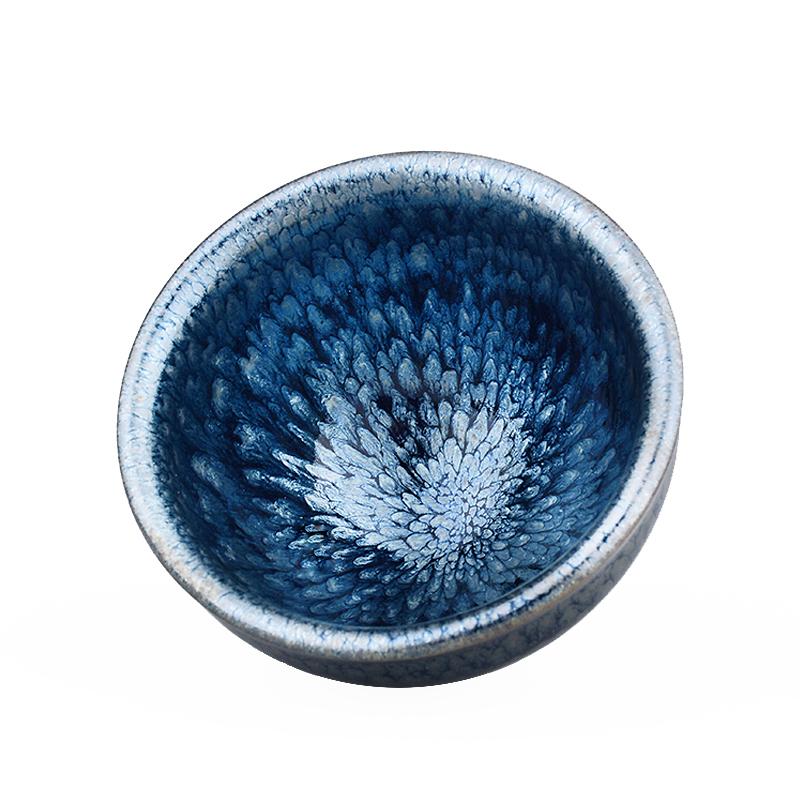
Share:
10 Taboos for Tenmoku Cup Play: Remember Them
Tenmoku bowl patterns: oil droplets and rabbit hair used to explain formation